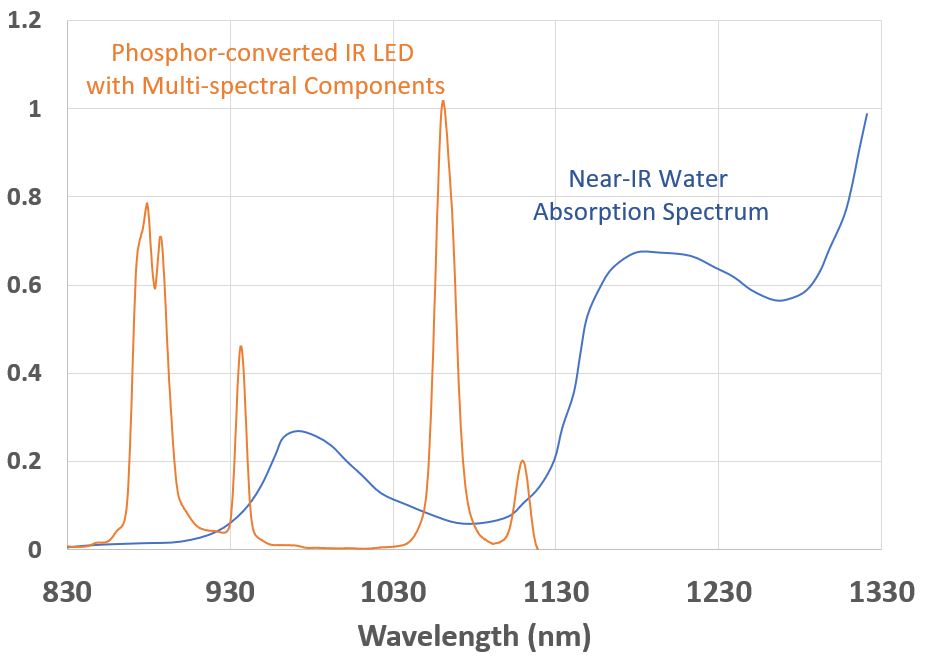Improving LIDAR & LiFi performance in rain or fog requires better sources capable of avoiding infrared signal attenuation by water in the atmosphere. Conventional LIDAR or LiFi system response during rain storms or heavy fog is undermined when the IR laser or LED pulses lose intensity as they pass through and are absorbed or scattered by rain or fog droplets. This results in the reduction of both range and resolution of the IR instrument. Since water in the atmosphere does not absorb equally across the infrared spectrum, it is important to design a LIDAR or LiFi source with near-infrared emission less affected by rain. An example of such source is shown in the graph below where the IR emission peaks coincide with the water absorption minimum.

A multi-spectral IR source designed to avoid the main water absorption peaks in the near-infrared
Unlike existing LIDAR or LiFi systems, phosphor-converted LEDs (pcLEDs) or laser-excited phosphors (LEPs) are not limited to specific IR wavelengths. With pcLEDs and/or LEPs, an infrared source can be customized to have specific spectral and power properties and even to deliver multi-spectral performance. In general high power IR pcLEDs are most suited for Flash LIDAR, but they can also be built using suitable optics for other systems based on the Scanning LIDAR and the Mechanical LIDAR architectures. For Scanning and Mechanical LIDARs, an IR LEP source can also be used instead of traditional lasers since LEPs can provide eye-safe and high power illumination over long-ranges that can extend beyond 1 km.